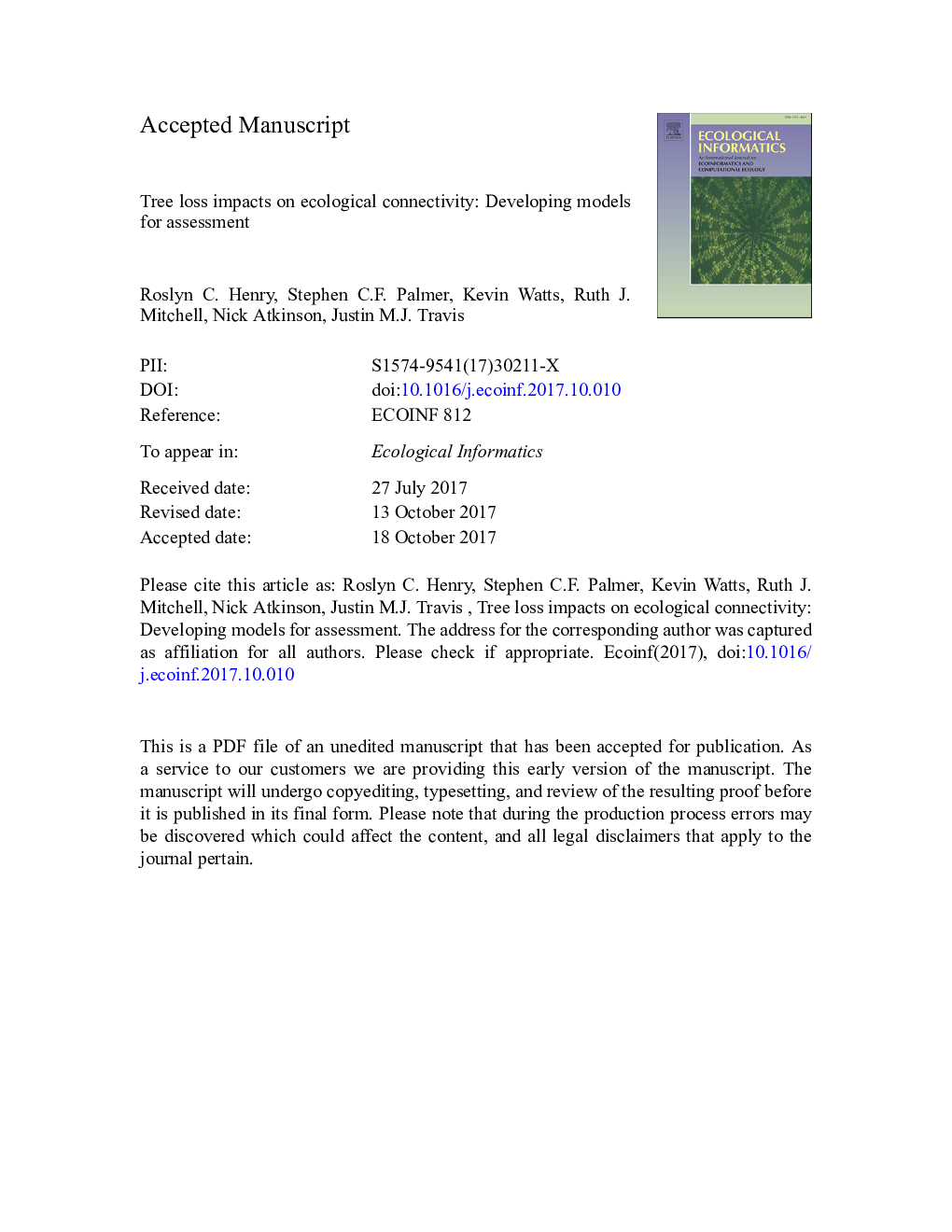| Article ID | Journal | Published Year | Pages | File Type |
|---|---|---|---|---|
| 8845888 | Ecological Informatics | 2017 | 38 Pages |
Abstract
Trees along linear features are important landscape features, and their loss threatens ecological connectivity. Until recently, trees outside of woodlands (TOWs) were largely unmapped however; the development of innovation mapping techniques provides opportunities to understand the distribution of such trees and to apply spatially explicit models to explore the importance of trees for connectivity. In this study, we demonstrate the utility of models when investigating tree loss and impacts on connectivity. Specifically, we investigated the consequences of tree loss due to the removal of roadside trees, a common management response for diseased or damaged trees, on wider landscape functional connectivity. We simulated the loss of roadside trees within six focal areas of the south east of the UK. We used a spatially explicit individual-based modelling platform, RangeShifter, to model the movement of 81 hypothetical actively dispersing woodland breeding species across these agriculturally fragmented landscapes. We investigated the extent to which removal of trees, from roadsides within the wider landscape, affected the total number of successful dispersers in any given year and the number of breeding woodlands that became isolated through time. On average roadside trees accounted for <Â 2% of land cover, but removing 60% of them (~Â 1.2% of land cover) nevertheless decreased the number of successful dispersers by up to 17%. The impact was greatest when roadside trees represented a greater proportion of canopy cover. The study therefore demonstrates that models such as RangeShifter can provide valuable tools for assessing the consequences of losing trees outside of woodlands.
Related Topics
Life Sciences
Agricultural and Biological Sciences
Ecology, Evolution, Behavior and Systematics
Authors
Roslyn C. Henry, Stephen C.F. Palmer, Kevin Watts, Ruth J. Mitchell, Nick Atkinson, Justin M.J. Travis,
